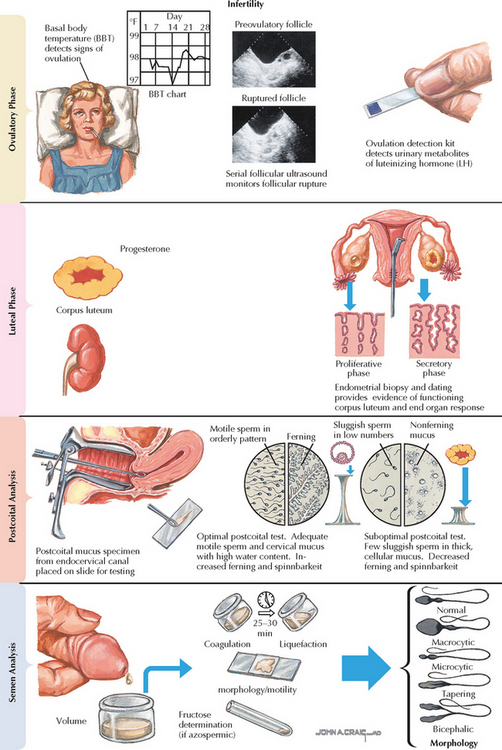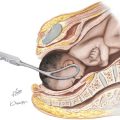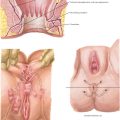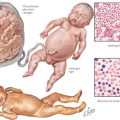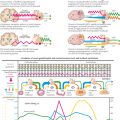Chapter 170 Infertility
INTRODUCTION
ETIOLOGY AND PATHOGENESIS
DIAGNOSTIC APPROACH
Differential Diagnosis
MANAGEMENT AND THERAPY
Nonpharmacologic
Drug(s) of Choice
MISCELLANEOUS
Steures P, van der Steeg JW, Hompes PG, et alCollaborative Effort on the Clinical Evaluation in Reproductive Medicine. Intrauterine insemination with controlled ovarian hyperstimulation versus expectant management for couples with unexplained subfertility and an intermediate prognosis: a randomised clinical trial. Lancet. 2006;368:216.
Legro RS, Barnhart HX, Schlaff WD, et alCooperative Multicenter Reproductive Medicine Network. Clomiphene, metformin, or both for infertility in the polycystic ovary syndrome. N Engl J Med. 2007;356:551.
Reddy UM, Wapner RJ, Rebar RW, Tasca RJ. Infertility, assisted reproductive technology, and adverse pregnancy outcomes: executive summary of a National Institute of Child Health and Human Development workshop. Obstet Gynecol. 2007;109:967.
American College of Obstetricians and Gynecologists. Management of infertility caused by ovulatory dysfunction. ACOG Practice Bulletin 34. Obstet Gynecol. 2002;99:347.
American College of Obstetricians and Gynecologists. Adoption. ACOG Committee Opinion 368. Obstet Gynecol. 2007;109:1507.
Bagshawe A, Taylor A. ABC of subfertility. Counselling. BMJ. 2003;327:1038.
Bagshawe A, Taylor A. Intractable infertility. BMJ. 2003;327:1098.
Braude P, Rowell P. Assisted conception. II—In vitro fertilisation and intracytoplasmic sperm injection. BMJ. 2003;327:852.
Braude P, Rowell P. Assisted conception. III—Problems with assisted conception. BMJ. 2003;327:920.
Cahill DJ, Wardle PG. Management of infertility. BMJ. 2002;325:28.
Evers JL. Female subfertility. Lancet. 2002;360:151.
Frey KA, Patel KS. Initial evaluation and management of infertility by the primary care physician. Mayo Clin Proc. 2004;79:1439.
Hamilton-Fairley D, Taylor A. Anovulation. BMJ. 2003;327:546.
Hart R. Unexplained infertility, endometriosis, and fibroids. BMJ. 2003;327:721.
Khalaf Y. ABC of subfertility. Tubal subfertility. BMJ. 2003;327:610.
Makar RS, Toth TL. The evaluation of infertility. Am J Clin Pathol. 2002;117:S95.
Pickering S, Braude P. Further advances and uses of assisted conception technology. BMJ. 2003;327:1156.
Rowell P, Braude P. Assisted conception. I—General principles. BMJ. 2003;327:799.
Setji TL, Brown AJ. Polycystic ovary syndrome: diagnosis and treatment. Am J Med. 2007;120:128.
Smith S, Pfeifer SM, Collins JA. Diagnosis and management of female infertility. JAMA. 2003;290:1767.
Taylor A. ABC of subfertility: extent of the problem. BMJ. 2003;327:434.
Taylor A. ABC of subfertility. Making a diagnosis. BMJ. 2003;327:494.
Van Voorhis BJ. Outcomes from assisted reproductive technology. Obstet Gynecol. 2006;107:183.
Van Voorhis BJ. Clinical practice. In vitro fertilization. N Engl J Med. 2007;356:379.

